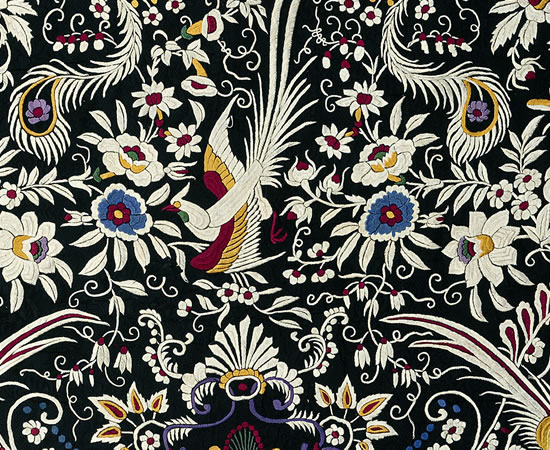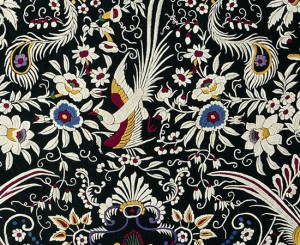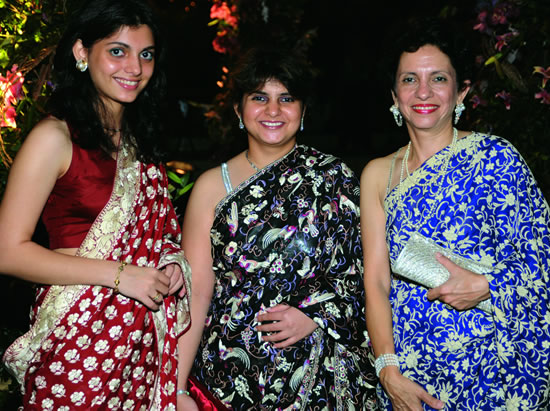
Parsi Work
Parsi embroidery work had become an extinct handicraft, until recently, when this exquisite and delicate form of embroidery became popular. Parsi Zoroastrian embroidery, particularly in the form of ‘Gara’ sarees, has become an intrinsic part of Indian textile heritage that has its origins in Iran during the early Bronze Age. In later years, this craft underwent the influences of Chinese, Persian, Indian and European heritage.
Origin & History
Although the Parsi work dates back to Bronze Age Persia which makes it thousands of years old, yet the gara saree is only 150 years old. From various historical records and Parsi elderly, it has become known that the Parsi women were familiarized with Chinese embroidery through Chinese pherias or merchants in the 19th and 20th centuries, which in fact carried hand embroidered pieces for trading and pre-orders and also ended up teaching the craft to Parsi women. However, as these Parsis traveled and settled in various areas in India like the Deccan, they ended up incorporating the Zardozi embroidery and developed their own unique style. They also managed to incorporate the European stitching patterns into their style to give it a unique perspective.
Sources of Inspiration
The embroidery depicts nature in a woven form: from Peonies, Lotus, Lilies, Bamboo, Cherry blossoms and other trees and flowers to beautiful birds, pagodas, huts and human figurines- Parsi work encompasses the world in all. Each motif in this embroidery has an intrinsic message. For instance, the chrysanthemums are symbolic of spring and joyousness. There is a beautiful interweaving of bright and pastel hues that make Parsi work a treat for the eyes. Hence from Chinese symbols to Persian symbols like the chakla chakli and cypress tree to the Indian lotus and peacock, Parsi embroidery has been improvised and developed to encompass so many different cultural art forms.
The Making
Gara sarees are perhaps the most popular example of Parsi embroidery and they have been in demand for their striking exquisite beauty which gradually became symbolic of the Parsi culture and tradition. The superior craftsmanship of the Parsi embroiders to create handwork so delicate and elegant was something that made these pieces valuable over the years. It takes nearly nine months for an embroiderer to create a gara saree as it requires intricate embellishment on all sides. The khaka stitch is a fine stitch that requires dexterous needlework and often leads to failing eyesight in the embroiderer, hence, this stitch is also known as the ‘forbidden stitch’. However, these days this work is done with the help of machines. Nevertheless, a pure Gara saree that is handcrafted to perfection requires a dexterous craftsman to accomplish the feat. Earlier, gold and silver threads were used in the work, which later gave way to satin threads and artificial zaris.
Present Day Scenario
In the present scenario, there was a phase when this exquisite and elegant handicraft was losing its sheen and popularity and was simply fading away. The introduction of mass production and availability of easier and cheaper options have led to the dwindling of Parsi work, apart from the declining Parsi community.
However, these days, Parsi embroidery is getting revived as the interest in traditional handicrafts is increasing. A lot of new accessories and apparel with Parsi work are given a modern makeover to increase its acceptability such as purses and scarves. Fashion designers are also showing their inclination in the exquisiteness of the Parsi embroidery by making modern designs using the Parsi embroidery.
Innovations
There are a lot of attempts being made at giving a modern twist to the Parsi embroidery by making the style more contemporary, and this is being done by adding new products like bags, scarves, cushion covers, dupattas and dress materials. A lot of the young fashion designers are coming up with stylish alternatives in order to give a new look to the traditional gara.
Global Appeal
Parsi embroidery is gaining more ground as fashionable embroidery which is being used on items other than the gara and jhabla, such as on purses, scarves, kurtas and shirts. However, Parsi work is yet to gain a global acceptance in the fashion scene, although it has been introduced by Jean Paul Gaultier in the Paris Fashion Week and by Ashdeen Lilaowala in the Lakme Fashion Week 2013.
Accessorizing
With the upcoming options of scarves, waistcoats, and purses embellished with Parsi embroidery, there would be increasing options that can be used to accessorize an otherwise plain or mono-colored outfit.
Maintenance
The heirloom Parsi work garas and jhablas have basically been prized properties as their value increases with every passing year. However, maintaining old garas has become quite challenging owing to their intricate embroidery on silk, which is prone to wear and tear.
The base fabric of the gara saree is the most delicate and is the one that is susceptible to extensive damage; however, the motifs are usually intact. Dry clean is the best option to ensure that no damage is caused to the garment.
Interesting Facts and Comparisons
- Parsi embroidery actually owes its origins in China, as the Chinese are the ones who taught this art form to the Parsi women.
- The traditional gara saree is a heirloom product and an asset whose value increases every year.
- The word ‘gara’ means ‘saree’ in Gujarati.
- A minimalist gara saree costs Rs.20,000 with the heavier ones costing Rs. 80,000 and above.
Categories: Motifs & Embroideries


